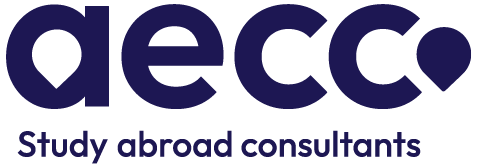Read on to get your latest updates on Universities, Courses Offered, Student Visa Updates, and lots more!


Are you considering furthering your education in Canada? If so, the Fall Intake might just be your golden ticket. Imagine, the crisp autumn leaves underfoot as you walk across a prestigious Canadian campus, but is the reality as picturesque? Fall Intake in Canada for International Students offers unique opportunities, yet it's accompanied by its own set of challenges. Why do countless international students mark their calendars for the September intakes? And how does one navigate this crucial period to maximise their educational journey in Canada? This article is your compass to understanding the ins and outs of the Fall Intakes Admissions process, shedding light on the essential steps, from selecting universities to mastering the application process. Our focus is to provide you with the key information and practical tips you need, ensuring your transition to studying in Canada this autumn is as smooth as an ice hockey rink. So, let's kickstart this educational expedition together, shall we?
As a start, to help you understand how this works better, here's a live example for you:
Ananya, an aspiring engineer from India, faced a daunting challenge: selecting the right Canadian university for her specialisation within a tight budget. She aimed for the Fall Intake in Canada for International Students but was overwhelmed by choices and deadlines. After meticulously researching, she chose the University of Alberta for its renowned engineering program, meeting her budget with a tuition of approximately 15 lakhs INR. Her journey highlights the importance of timely research and decision-making in navigating the September Intake in Canada, resulting in a balance between quality education and financial feasibility.
The Fall Intake in Canada for International Students refers to the primary academic start period in Canadian universities, typically commencing in September. This intake is crucial for international students due to its comprehensive course offerings and significant opportunities.
The Fall Intake in Canada for International Students Provides several advantages for international students, from smoother academic transitions to enhanced opportunities for personal and professional growth.
Choosing the right university is a significant step in your educational journey, especially for the Fall Intake in Canada. Below is a detailed table featuring some of the top Universities in Canada that accept Fall Intakes, including crucial information like annual tuition fees and final application deadlines. This will assist you in making an informed decision for your Fall Intakes Admissions.
|
University Name |
QS Ranking 2024 |
Annual Tuition Fee (INR) |
Final Application Deadline |
Location |
|
University of Toronto |
25 |
Approx. 20 Lakhs |
Feb 1 |
Toronto |
|
McGill University |
27 |
Approx. 18 Lakhs |
Jan 15 |
Montreal |
|
University of British Columbia |
46 |
Approx. 21 Lakhs |
Jan 15 |
Vancouver |
|
University of Alberta |
110 |
Approx. 15 Lakhs |
Mar 1 |
Edmonton |
|
McMaster University |
140 |
Approx. 17 Lakhs |
Feb 1 |
Hamilton |
|
University of Waterloo |
166 |
Approx. 18 Lakhs |
Mar 27 |
Waterloo |
|
Western University |
203 |
Approx. 16 Lakhs |
Mar 15 |
London |
|
University of Calgary |
235 |
Approx. 14 Lakhs |
Mar 1 |
Calgary |
|
Queen's University |
240 |
Approx. 16 Lakhs |
Feb 1 |
Kingston |
|
Simon Fraser University |
298 |
Approx. 15 Lakhs |
Jan 31 |
Burnaby |
The Fall Intake in Canada for International Students offers a diverse range of courses. Below, you'll find a table highlighting some popular courses available at Canadian universities for the Fall Intake, along with their respective summer deadlines. This information is vital for students planning for the September Intakes in Canada or the Canada September Intake.
|
University Name |
Courses Offered |
Global Rank in Course |
Summer Deadline |
Location |
|
University of Toronto |
Computer Science, Business Management |
Top 10 |
Feb 1 |
Toronto |
|
McGill University |
Engineering, Medicine |
Top 20 |
Jan 15 |
Montreal |
|
University of British Columbia |
Psychology, Economics |
Top 30 |
Jan 15 |
Vancouver |
|
University of Alberta |
Education, Environmental Sciences |
Top 100 |
Mar 1 |
Edmonton |
|
McMaster University |
Health Sciences, Humanities |
Top 50 |
Feb 1 |
Hamilton |
|
University of Waterloo |
Mathematics, Engineering |
Top 25 |
Mar 27 |
Waterloo |
|
Western University |
Law, Arts |
Top 150 |
Mar 15 |
London |
|
University of Calgary |
Energy Engineering, Business |
Top 200 |
Mar 1 |
Calgary |
|
Queen's University |
Political Studies, Chemistry |
Top 175 |
Feb 1 |
Kingston |
|
Simon Fraser University |
Computing Science, Interactive Arts & Technology |
Top 250 |
Jan 31 |
Burnaby |
For students aiming for the Fall Intake in Canada, understanding the specific timeline is key. Here's a detailed breakdown:
Precise documentation is crucial for the Fall Intake in Canada for International Students. Here's what you need:
A meticulous approach is required for applying to the Fall Intake in Canada:
As we've explored, the Fall Intake in Canada for International Students offers a wealth of opportunities, from a wide selection of courses to an enriching campus experience. Whether you're considering universities like the University of Toronto or McGill, the September Intakes in Canada are your gateway to an outstanding educational journey. So, why wait? Start planning your adventure today. If you need expert guidance or have questions, Contact AECC to kickstart your Canadian academic aspirations.
Is the September intake the same as the Fall intake in Canada?
Yes, the September intake is synonymous with the Fall Intake in Canada, marking the start of the academic year in Canadian universities.

Test Preparation
Premium Counselling
Get in Touch
About Us
Our Partners
Quick Links
Book your FREE consultation with Certified Counsellors